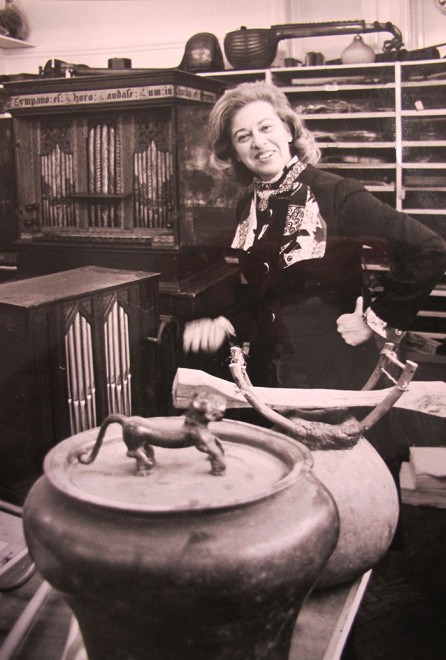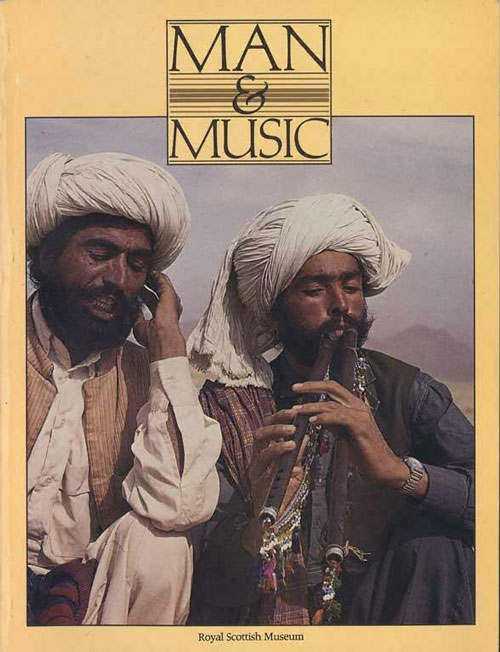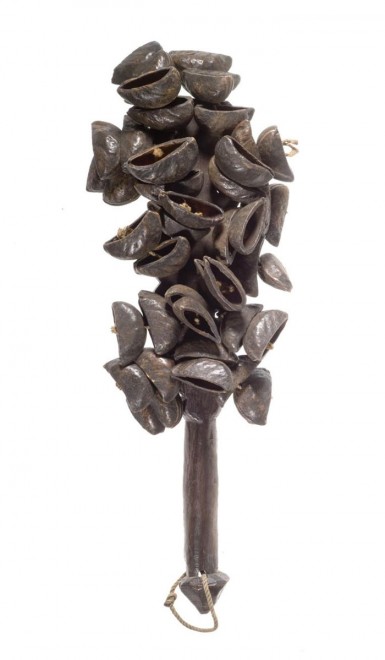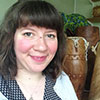Ethnomusicologist Jean Jenkins (1922-1990) worked for many years at the Horniman Museum in London. However, London was not her only home. As well as bases in France and in Edinburgh, she travelled the world for months at a time, barely stopping to collect her mail before rushing off to her next adventure.

Her work as a musical instruments curator, and her passion for the musics of the world, precipitated visits across the Americas, Asia, Europe and Africa in search of musical instrument makers and musicians who could supply her with material. In addition to collecting musical instruments specifically for display, Jenkins seems always to have had side projects: contributing to programmes for the BBC, writing articles, and producing events.
One such special event was the Man and Music exhibition which Jenkins directed at the National Museum of Scotland (then the Royal Scottish Museum) in 1983. This was timed to coincide with the Edinburgh International Festival, and included a series of concert performances by musicians from across the globe. The emphasis of the exhibition was the kaleidoscopic variety of the musics of the world. A critical success, the exhibition also confirmed Jenkins’ relationship with National Museums Scotland. Eventually, following Jenkins’ death in 1990, her archives, field recordings, and personal collection of musical instruments were passed to the Department of World Cultures at National Museums Scotland. This has formed part of the Performance and Lives gallery, in an elegant display of the relationship between collector, collection, and museum.

Jenkins’ archives were the focus of my recent trip to Edinburgh. I spent two weeks at the Department of World Cultures, contributing to an ongoing project to organise and catalogue the collection. I was working on letters, articles, and notes, mainly relating to Jenkins’ trips to the Middle East and North and West Africa in the 1980s for Man and Music, and her professional papers from her early work at the BBC in the 1950s and 60s.
I read through the items of each folder, and compiled contents lists. During the process I was able to get an insight into Jenkins’ personality, through her dealings with musicians, instrument makers, museum staff and colleagues, as well as more personal notes amongst her friends and husband (Clive Jenkins, a trade unionist whom Jenkins married and divorced in the early 1960s). My impressions are of a no-nonsense and enthusiastic character, fiercely passionate about conveying the richness of musical life in whichever community she was visiting through musical instruments and recordings.

My interest in this archive stems from a conference held at National Museums Scotland in 2014, organised in collaboration with the University of Edinburgh, on the subject of music and collecting. At the time I was carrying out my MA (Ethnomusicology) research into music in museums, and I ended up using the Performance and Lives gallery as a case study for the ways ethnomusicological research can be inserted into museum displays. I met Sarah Worden at this conference, and we talked about the possibility of me doing some volunteer work on the archive.
Fast forward to 2016, and I am now a PhD candidate at Bangor University. My subject is a collection of musical instruments held at the School of Music in Bangor, collected by academic and composer Peter Crossley-Holland during the 1970s and 1980s. The section which inspires my research comprises more than 300 ancient musical instruments from West Mexico. Most are ceramic ocarinas, spanning the periods from 3000 B.C.E. until the Spanish conquest. Along with the instruments, the collection includes extensive paper archives and tape recordings from Crossley-Holland’s career as an ethnomusicologist and previously with the BBC. It was a pleasant surprise when I came across some correspondence between Crossley-Holland and Jenkins, while they were both working on a documentary for the Third Programme in the early 1960s.
As well as working on the Jean Jenkins archive, my time at National Museums Scotland was full of other fun and interesting activities. Sarah did a wonderful job of making me feel very welcome and made sure I was able to make the most of my trip to Edinburgh. I attended a research seminar about dinosaurs on Skye; visited the amazing Celts exhibition; visited the museum stores; went to a staff yoga session; and of course, got to look around the public galleries. Throughout my fortnight, the lovely staff of the Department of World Cultures made me feel very comfortable working there, and made my experience very rewarding and memorable. I hope to return very soon!
